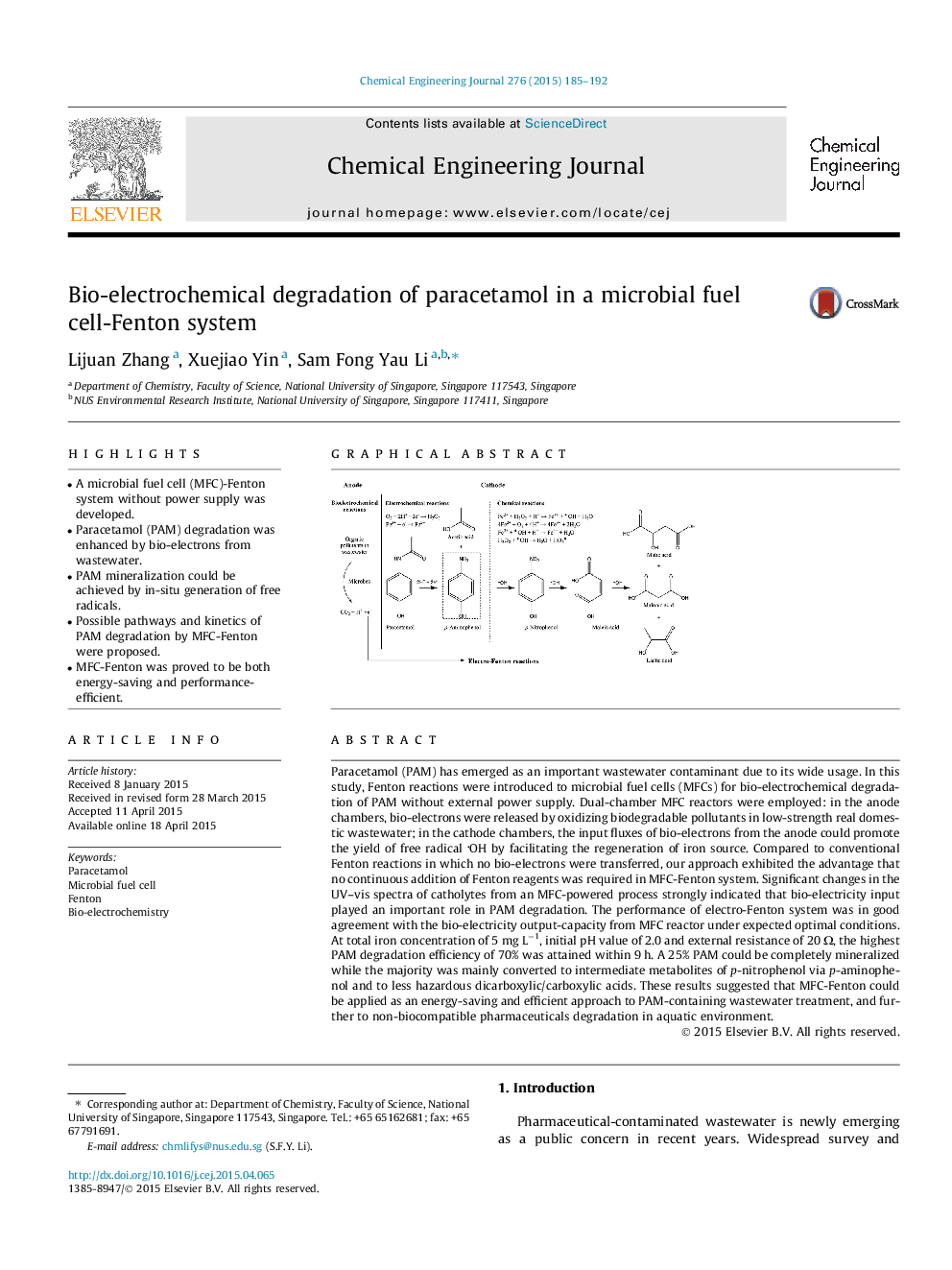| کد مقاله | کد نشریه | سال انتشار | مقاله انگلیسی | نسخه تمام متن |
|---|---|---|---|---|
| 146227 | 456364 | 2015 | 8 صفحه PDF | دانلود رایگان |
• A microbial fuel cell (MFC)-Fenton system without power supply was developed.
• Paracetamol (PAM) degradation was enhanced by bio-electrons from wastewater.
• PAM mineralization could be achieved by in-situ generation of free radicals.
• Possible pathways and kinetics of PAM degradation by MFC-Fenton were proposed.
• MFC-Fenton was proved to be both energy-saving and performance-efficient.
Paracetamol (PAM) has emerged as an important wastewater contaminant due to its wide usage. In this study, Fenton reactions were introduced to microbial fuel cells (MFCs) for bio-electrochemical degradation of PAM without external power supply. Dual-chamber MFC reactors were employed: in the anode chambers, bio-electrons were released by oxidizing biodegradable pollutants in low-strength real domestic wastewater; in the cathode chambers, the input fluxes of bio-electrons from the anode could promote the yield of free radical OH by facilitating the regeneration of iron source. Compared to conventional Fenton reactions in which no bio-electrons were transferred, our approach exhibited the advantage that no continuous addition of Fenton reagents was required in MFC-Fenton system. Significant changes in the UV–vis spectra of catholytes from an MFC-powered process strongly indicated that bio-electricity input played an important role in PAM degradation. The performance of electro-Fenton system was in good agreement with the bio-electricity output-capacity from MFC reactor under expected optimal conditions. At total iron concentration of 5 mg L−1, initial pH value of 2.0 and external resistance of 20 Ω, the highest PAM degradation efficiency of 70% was attained within 9 h. A 25% PAM could be completely mineralized while the majority was mainly converted to intermediate metabolites of p-nitrophenol via p-aminophenol and to less hazardous dicarboxylic/carboxylic acids. These results suggested that MFC-Fenton could be applied as an energy-saving and efficient approach to PAM-containing wastewater treatment, and further to non-biocompatible pharmaceuticals degradation in aquatic environment.
Figure optionsDownload as PowerPoint slide
Journal: Chemical Engineering Journal - Volume 276, 15 September 2015, Pages 185–192
